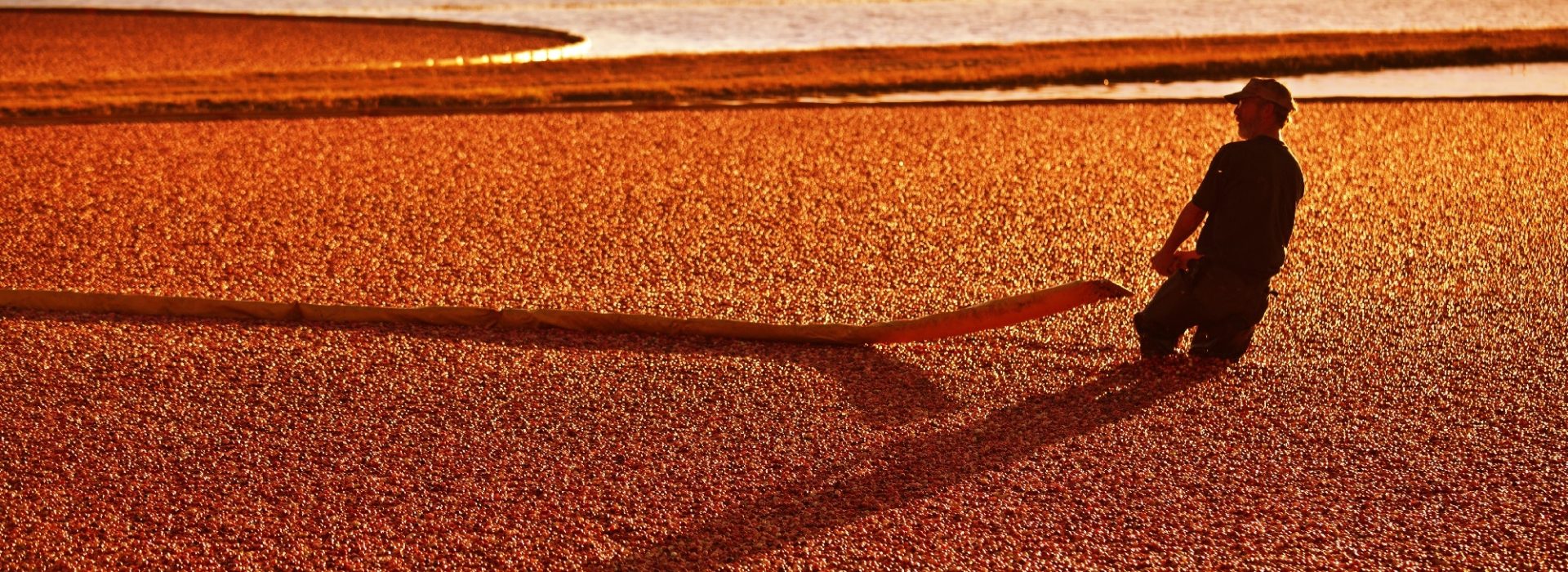Nous sommes reconnaissants pour la récolte de canneberges
With cookies, muffins, tarts and more, we’re spoiled for great choices when it comes to the sharp tasting berry. But did you ever stop to consider how they’re grown? Today we’ll do just that, looking at the fascinating harvesting process before touching on health benefits. Of course, we’ll also be letting you know what red speckled desserts there are near you.
The cranberry scene in Canada is currently booming. The most recent figures from Statistics Canada (2019) show Quebec is responsible for 64.3% of the Canadian market. British Columbia follows, producing almost 30%. Finally, there is Ontario and Alberta, who deliver nearly 10% of the cranberries. The process is certainly an interesting one. No doubt, we’ve all seen those photos of cranberry-filled swimming pools being handled by people in waders.
The Cranberry Harvest Process
Looking at the process more closely, we need to visit a bog: a marshy expanse that we can normally find near wetlands. This is where cranberries grow on long vines. During autumn the fruits ripen, turning into that vibrant red colour. This is when we can commence the wet and dry harvesting. Dry harvesting uses a mechanical picker, while wet cranberry harvesting means flooding the bog with 18 inches (45.7cm) of water – this is when the waders come in! Growers use water reels to churn up the water and gently loosen the berries from the vines. The air trapped within the fruit causes them to float up to the surface where growers gather them up. Then eventually, we will create cranberry desserts with them.
Delicious Cranberry Desserts
The most popular of these desserts are muffins, tarts, health bars, and cookies, and … cookies, and more cookies. We often pair them with macadamia nuts, cashews, and chocolate. But that’s not to say you can’t find a straight up cranberry cake if you know where to look. Luckily, we have a list of desserts aux canneberges près de chez vous. Cela vaut la peine d'y jeter un coup d'œil, car c'est le moment où nous avons le plus de chances de voir des canneberges sur le marché car elles sont originaires d'Amérique du Nord, nous sommes en pleine saison de la récolte et elles se marient parfaitement avec une dinde rôtie !
Not to mention, these tart little berries are actually good for you. It’s true they’re naturally low in sugar (4 grams of sugar per cup). Much more so than grapes (23 grams) or pomegranates (24 grams). They’re also high in polyphenols, which are great for circulation and blood pressure. Of course, there’s the correlation between the cranberry’s place in preventing urinary tract infections (UTIs). One polyphenol in particular has the ability to stop bacteria adhering to the urinary wall. But that’s not all – these fruits even have probiotic properties that feed the good gut bacteria in us.
No wonder we refer to them as superfruits. If this is what we know now in 2020, imagine what we will learn in the years to come. Until then, next time you look at one of these healthy superfruits in one of your desserts, take a moment to consider the wet cranberry harvest process. You can imagine the farmers spinning around in the water to harvest these fruits!





